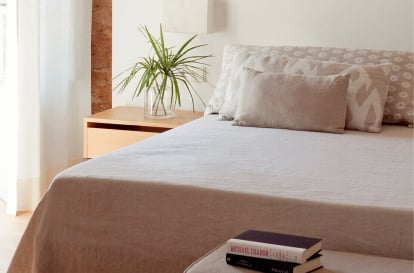Tour of the archaeological sites of Mallorca
If you are interested in history and culture and will be spending a few days in Mallorca soon, this post is for you. We are about to take a fascinating tour of the archaeological sites you can find in Mallorca.
This Balearic island is a true open-air museum, full of relics that tell stories of ancient civilizations and millennia-old cultures. From prehistoric talayots to Roman remains, visiting these archaeological sites will transport you to past eras and allow you to better understand Mallorca's rich cultural heritage. Get ready to explore the island's main sites, where each step brings you closer to the historical roots of this Mediterranean gem.
A tour of the most representative archaeology of Mallorca
Mallorca is not only a paradise for sun and beach lovers but also for those interested in history and archaeology. This tour of the island's archaeological sites will take you through millennia of history, from prehistory to the Roman era, passing through the Talayotic and Balearic periods. Each site offers a unique perspective on the civilizations that inhabited Mallorca and allows you to appreciate the cultural richness of this beautiful Mediterranean island.
1. Ses Païsses (Artà)
We begin our tour in Artà, in the northeast of the island, with a visit to one of the most important Talayotic sites in Mallorca: Ses Païsses. This impressive settlement, surrounded by a wall nearly three meters high, dates back to 850 B.C. and offers a complete view of the life of the island's first inhabitants. Here you can explore the dwellings, the central talayot, and the funerary structures that make up this complex. Don't forget to visit the Regional Museum of Artà to gain a deeper understanding of the archaeological findings from the site.
2. Capocorb Vell (Llucmajor)
From Artà, we head to the south of the island, towards Llucmajor, where Capocorb Vell is located, one of the largest Talayotic sites in Mallorca. This settlement, dating to around 1000 B.C., consists of five talayots (stone towers) and numerous dwellings that offer a detailed view of the social and architectural structure of the time. A visit to Capocorb Vell is like a journey back in time, where you can imagine how the ancient Mallorcans lived, worked, and interacted.

3. Son Fornés (Montuïri)
Next, we move towards the center of the island to visit Son Fornés, near Montuïri. This site features three talayots and is especially known for its large walled enclosure and circular dwellings. Excavations at Son Fornés have revealed a rich collection of artifacts, including kitchen utensils, tools, and everyday objects that provide valuable information about life in the Bronze and Iron Ages. The Son Fornés Archaeological Museum, located in Montuïri, showcases many of these findings and is a must-visit to complement your tour of the site.
4. Pollentia (Alcúdia)
Our next stop is Alcúdia, where the ancient Roman city of Pollentia is located. Founded in 123 B.C., Pollentia was one of the most important cities in the Balearic Islands during Roman rule. The archaeological site of Pollentia includes a forum, a Roman theater, and several domus (Roman houses), offering a fascinating insight into urban life in antiquity. The Monographic Museum of Pollentia, located in the center of Alcúdia, houses an impressive collection of objects discovered at the site, including pottery, coins, and sculptures.
5. Closos de Can Gaià (Felanitx)
In the east of Mallorca, near Felanitx, we find the site of Closos de Can Gaià. This Bronze Age settlement is known for its navetas, boat-shaped funerary structures dating back to around 1700 B.C. Closos de Can Gaià is one of the few prehistoric sites in Mallorca that you can visit for free and offers an educational experience thanks to its informative panels and marked routes.
6. Son Real (Santa Margalida)
We continue our tour towards the north to visit the necropolis of Son Real, located in Santa Margalida. This site, known as "The Necropolis" or "Cemetery of the Phoenicians," includes more than 100 tombs dating from the 7th to the 1st century B.C. The tombs at Son Real come in different shapes and sizes, including circles, squares, and horseshoes, reflecting the various cultural influences of the time. The site's proximity to the beach of Son Real makes this visit a perfect combination of history and nature.
As you can see, all these archaeological remains are located in different towns of Mallorca, so it is essential that you stay in a well-located hotel during your trip to the island. In this regard, our rural hotel Predi Son Jaumell is an excellent option for those seeking special and unique accommodations (we have a Michelin Key) that guarantee relaxation and tranquility. Our rural hotel is situated in an incomparable setting, a historic building surrounded by ancient holm oaks where you can listen to the birds singing while enjoying a book by our pool. Additionally, we are located in Capdepera, a beautiful town that you should also visit if you want to experience the true essence of Mallorca.
Moreover, our hotel features a top-tier restaurant called Bistro Senzill, where all dishes are prepared with local products and vegetables harvested from our own garden.


If you are planning your trip to Mallorca and intend to tour the island's archaeology, we recommend wearing comfortable shoes, bringing water, and using sunscreen, as many of these sites are outdoors and require walking. Additionally, consider visiting local museums to gain a more comprehensive understanding of the archaeological discoveries and their historical context.





